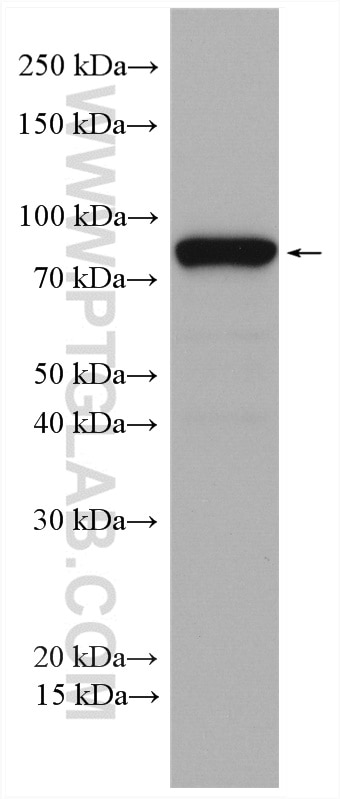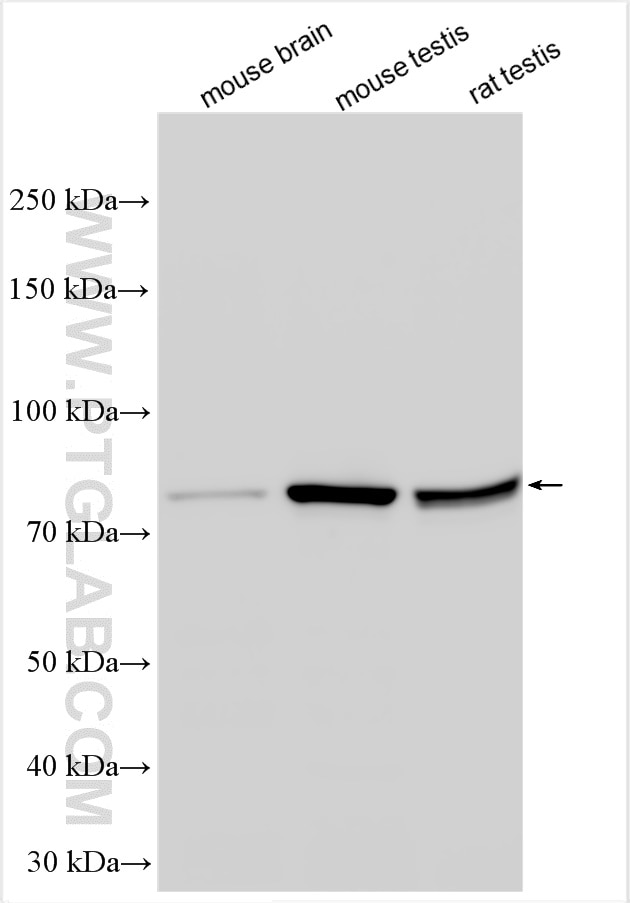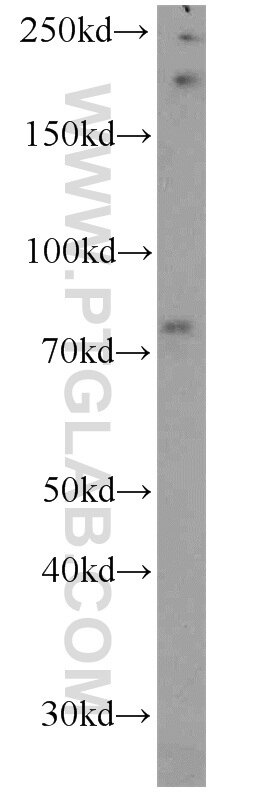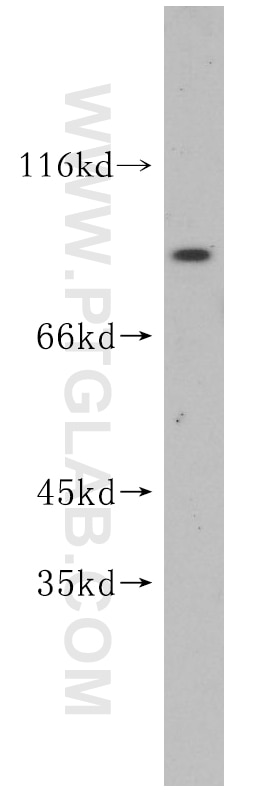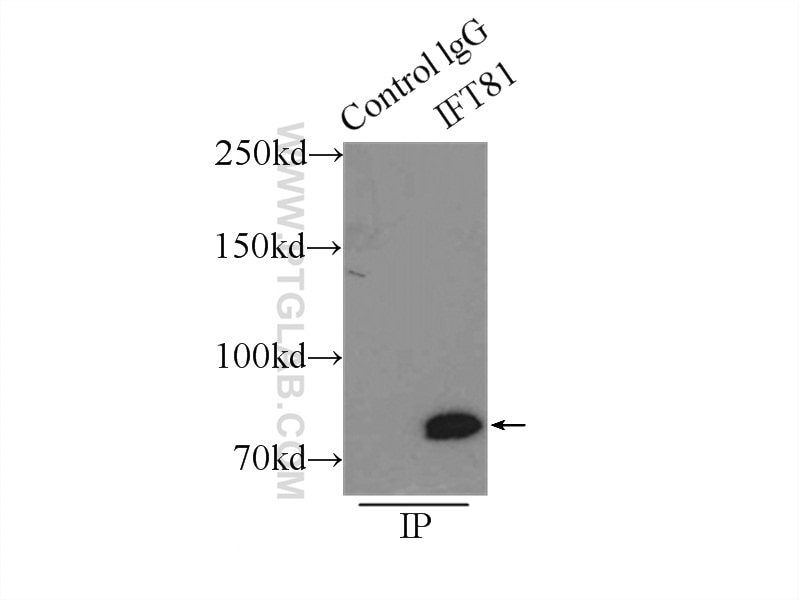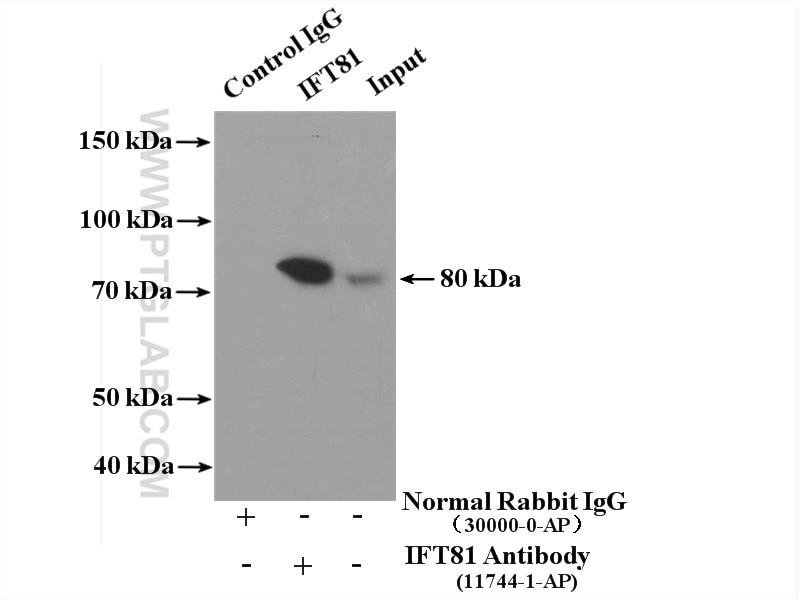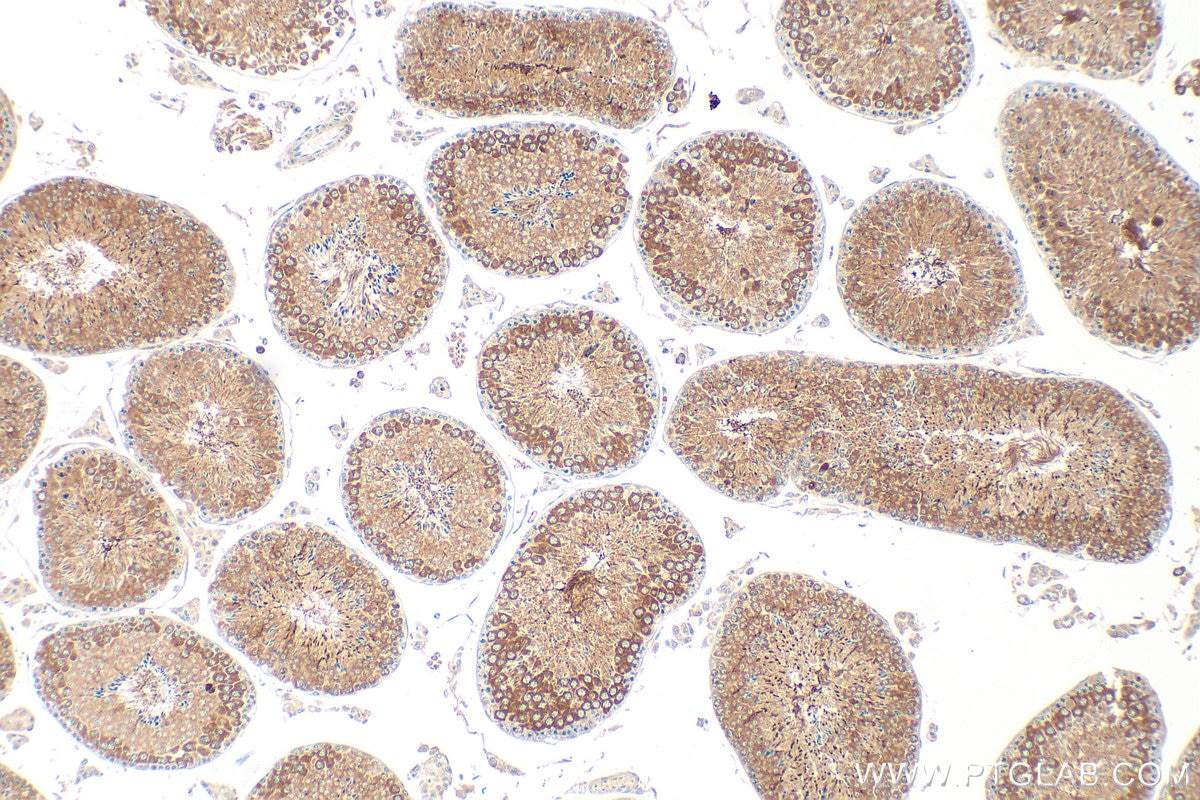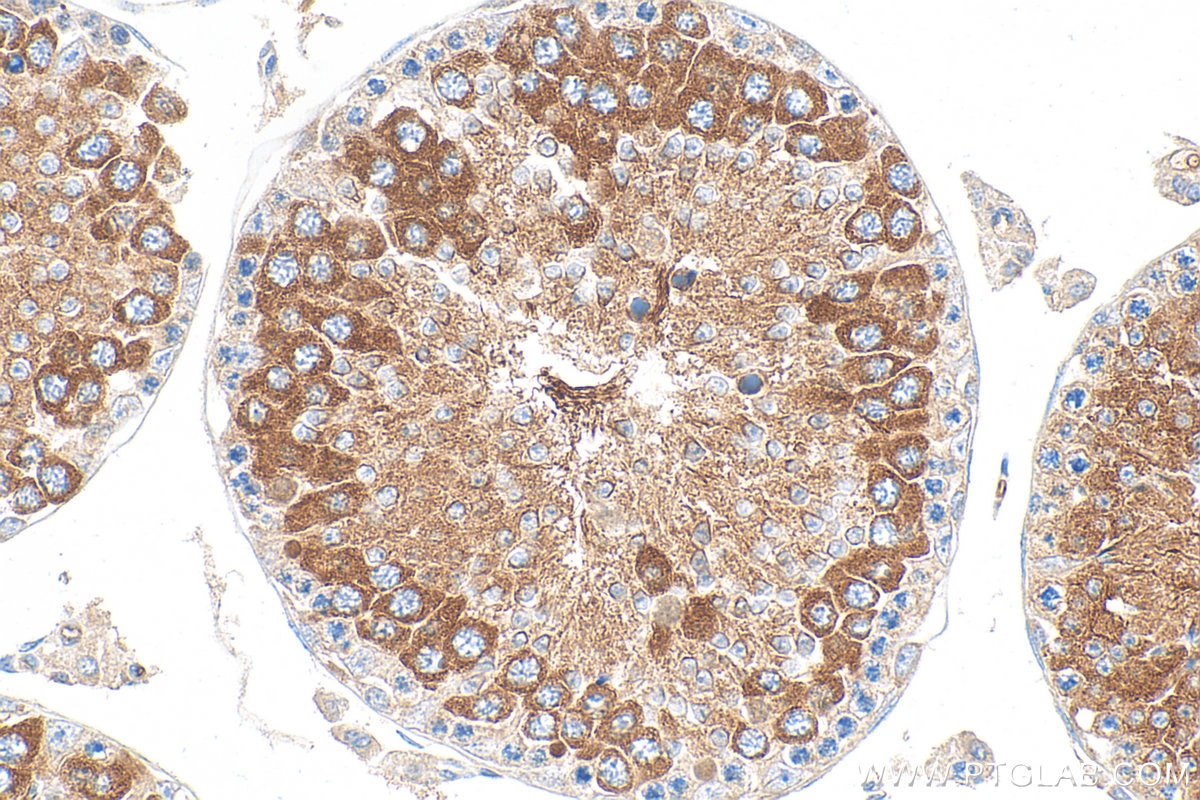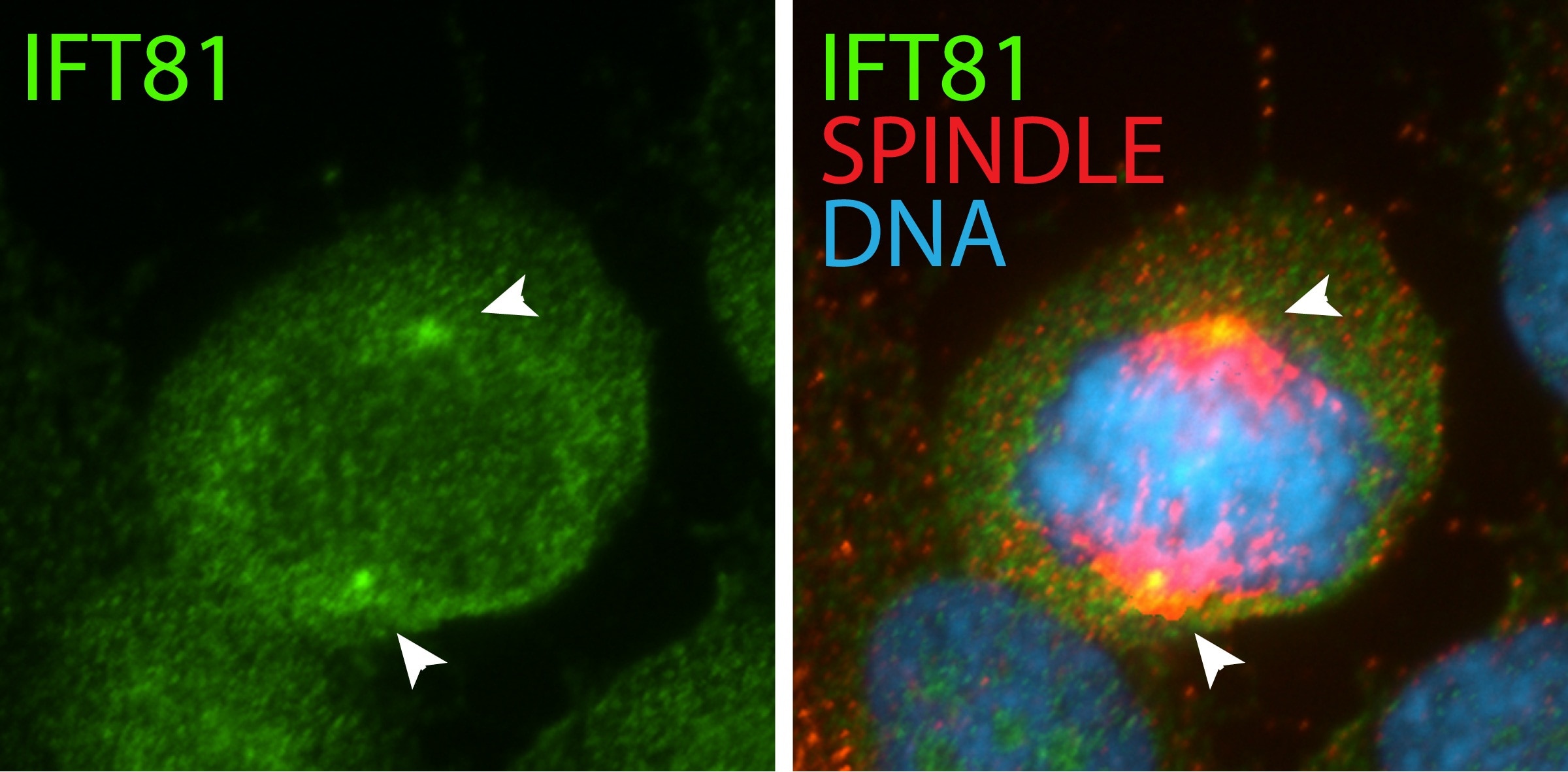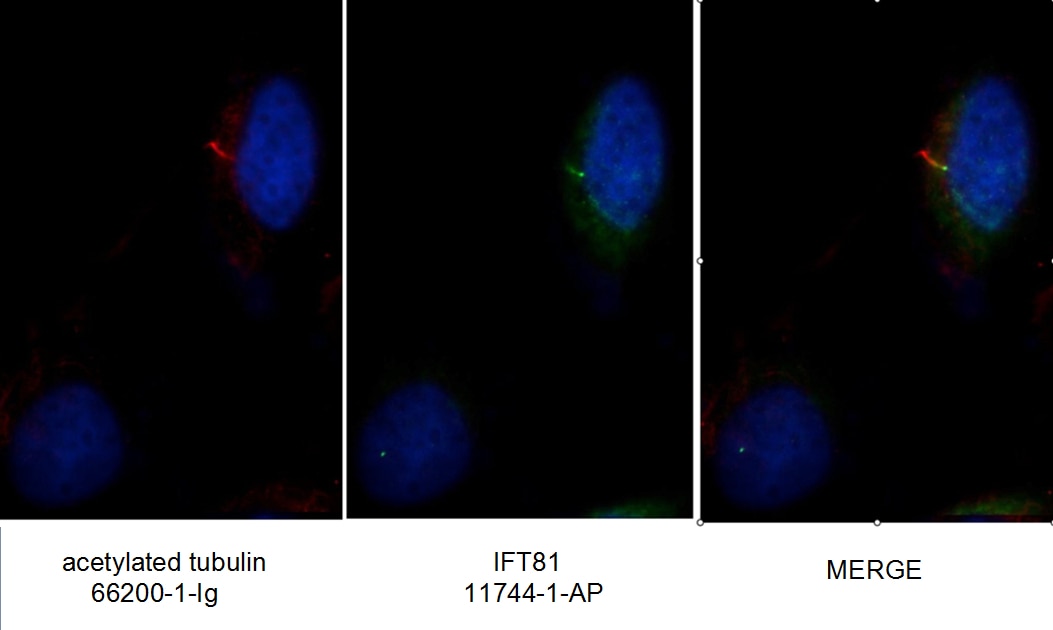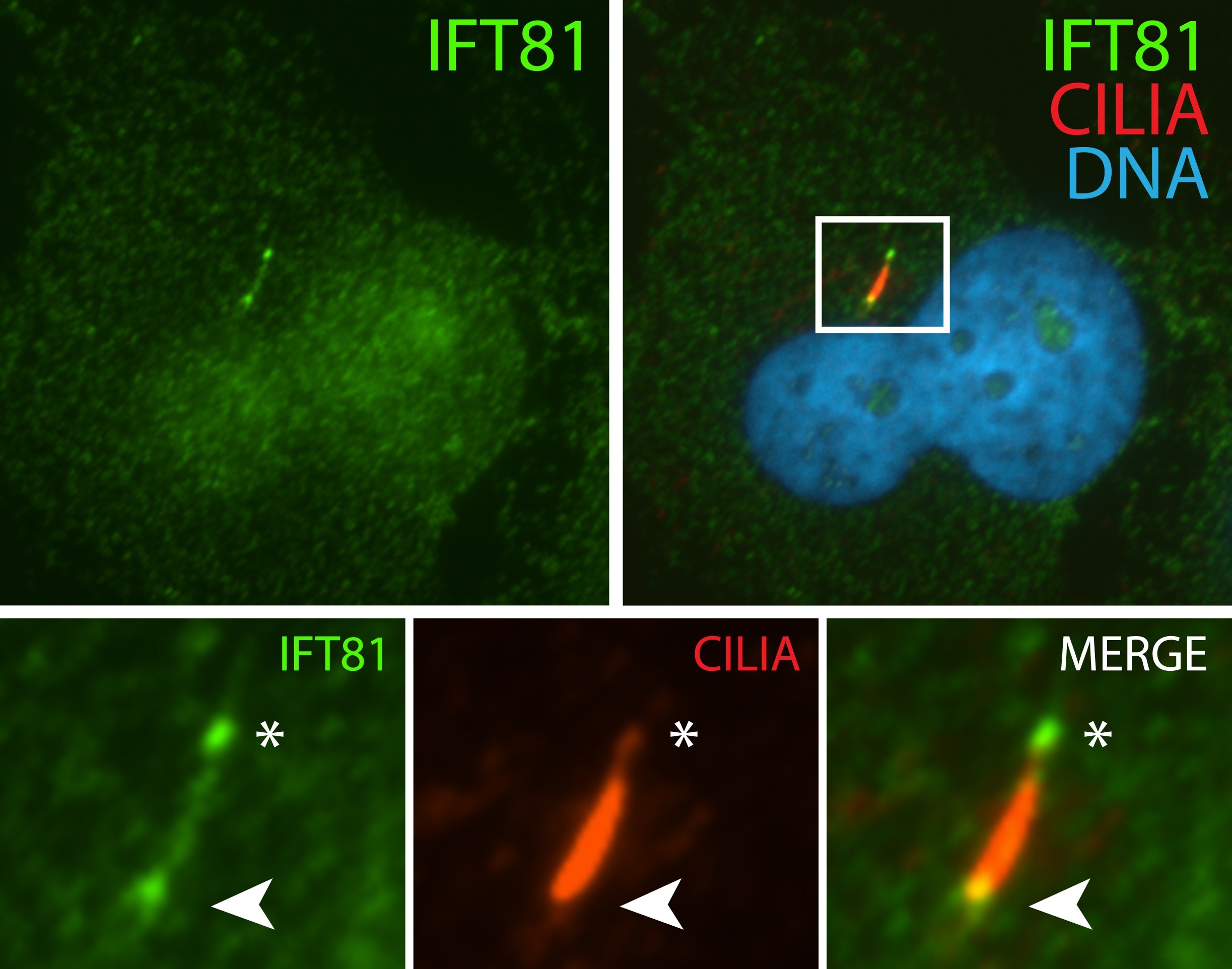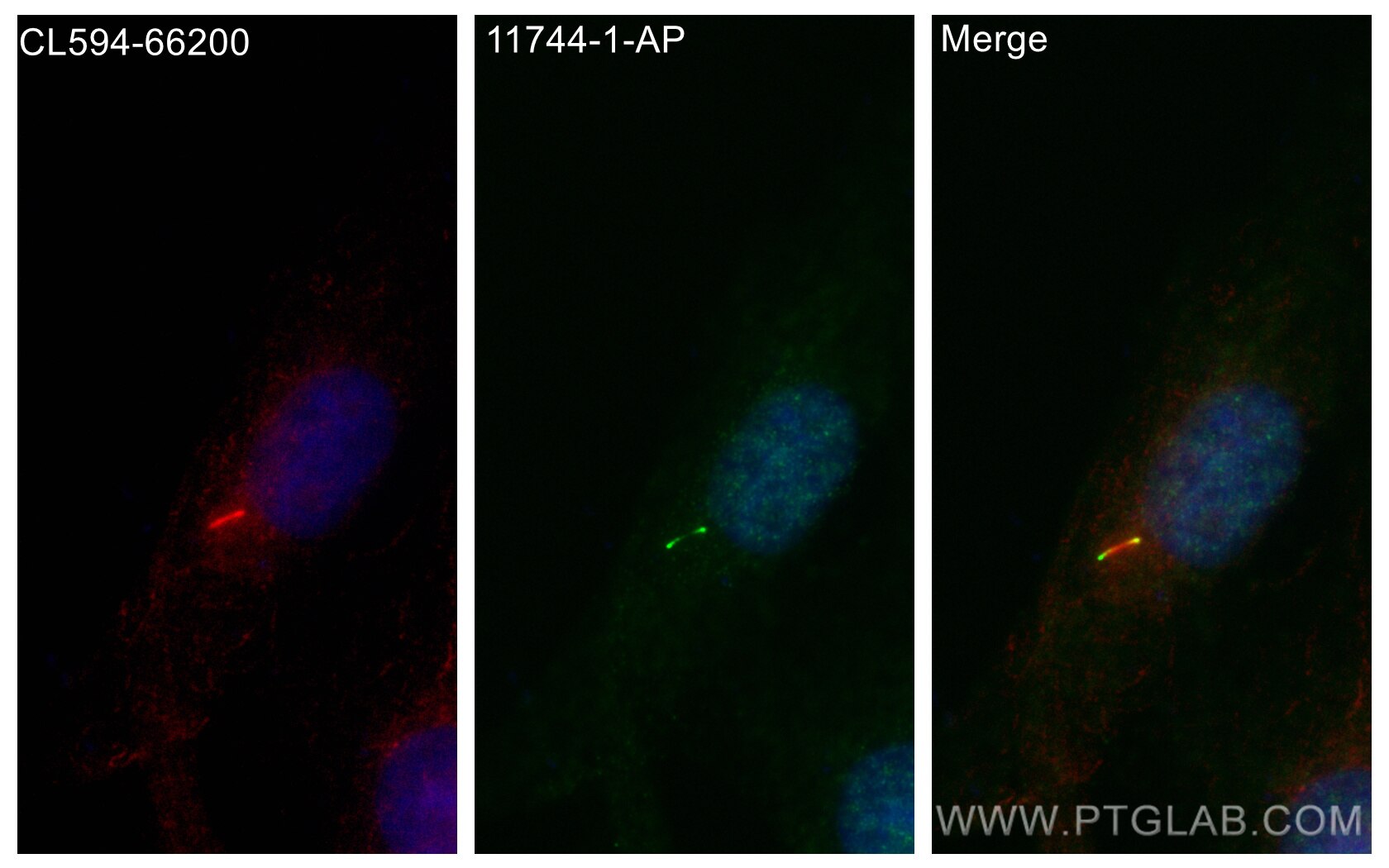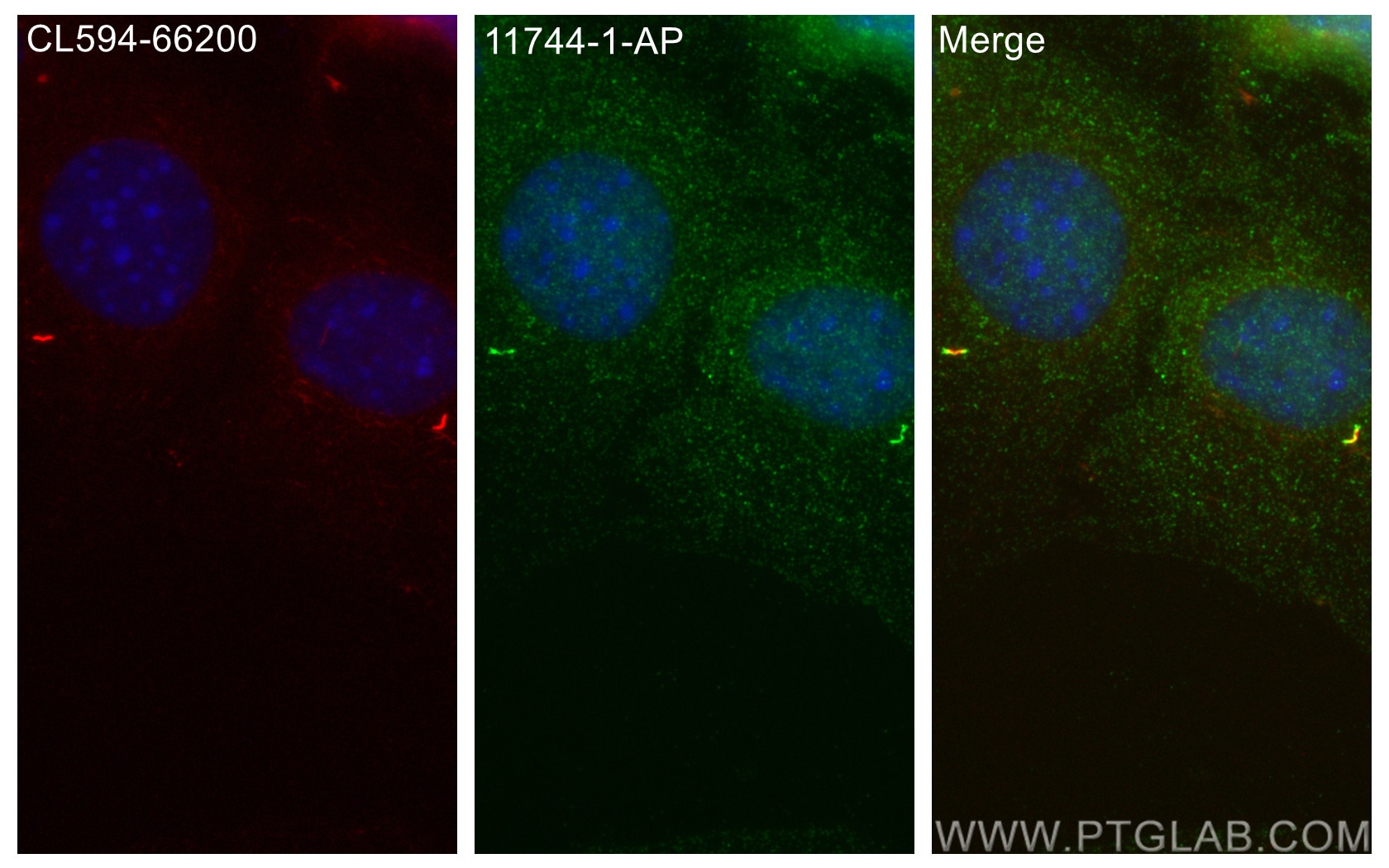- Phare
- Validé par KD/KO
Anticorps Polyclonal de lapin anti-IFT81
IFT81 Polyclonal Antibody for WB, IHC, IF/ICC, IP, ELISA
Hôte / Isotype
Lapin / IgG
Réactivité testée
canin, Humain, rat, souris
Applications
WB, IHC, IF/ICC, IP, CoIP, ELISA
Conjugaison
Non conjugué
N° de cat : 11744-1-AP
Synonymes
Galerie de données de validation
Applications testées
| Résultats positifs en WB | tissu cérébral de souris, cellules HEK-293, tissu cérébral humain, tissu testiculaire de rat, tissu testiculaire de souris |
| Résultats positifs en IP | tissu cérébral de souris |
| Résultats positifs en IHC | tissu testiculaire de souris, il est suggéré de démasquer l'antigène avec un tampon de TE buffer pH 9.0; (*) À défaut, 'le démasquage de l'antigène peut être 'effectué avec un tampon citrate pH 6,0. |
| Résultats positifs en IF/ICC | cellules C2C12, cellules hTERT-RPE1, cellules MDCK |
Dilution recommandée
| Application | Dilution |
|---|---|
| Western Blot (WB) | WB : 1:1000-1:8000 |
| Immunoprécipitation (IP) | IP : 0.5-4.0 ug for 1.0-3.0 mg of total protein lysate |
| Immunohistochimie (IHC) | IHC : 1:50-1:500 |
| Immunofluorescence (IF)/ICC | IF/ICC : 1:50-1:500 |
| It is recommended that this reagent should be titrated in each testing system to obtain optimal results. | |
| Sample-dependent, check data in validation data gallery | |
Applications publiées
| KD/KO | See 1 publications below |
| WB | See 26 publications below |
| IHC | See 1 publications below |
| IF | See 34 publications below |
| CoIP | See 1 publications below |
Informations sur le produit
11744-1-AP cible IFT81 dans les applications de WB, IHC, IF/ICC, IP, CoIP, ELISA et montre une réactivité avec des échantillons canin, Humain, rat, souris
| Réactivité | canin, Humain, rat, souris |
| Réactivité citée | rat, Humain, souris |
| Hôte / Isotype | Lapin / IgG |
| Clonalité | Polyclonal |
| Type | Anticorps |
| Immunogène | IFT81 Protéine recombinante Ag2339 |
| Nom complet | intraflagellar transport 81 homolog (Chlamydomonas) |
| Masse moléculaire calculée | 676 aa, 80 kDa |
| Poids moléculaire observé | 75-80 kDa |
| Numéro d’acquisition GenBank | BC029349 |
| Symbole du gène | IFT81 |
| Identification du gène (NCBI) | 28981 |
| Conjugaison | Non conjugué |
| Forme | Liquide |
| Méthode de purification | Purification par affinité contre l'antigène |
| Tampon de stockage | PBS with 0.02% sodium azide and 50% glycerol |
| Conditions de stockage | Stocker à -20°C. Stable pendant un an après l'expédition. L'aliquotage n'est pas nécessaire pour le stockage à -20oC Les 20ul contiennent 0,1% de BSA. |
Informations générales
Intraflagellar transport (IFT), mediated by molecular motors and IFT particles, is an important transport process that occurs in the cilium and has been shown to be essential for the assembly and maintenance of cilia and flagella in many organisms. IFT particles are multi-subunit complexes of proteins that functions to move non-membrane-bound particles from the cell body to the tip of cilium or flagellum, then return them to the cell body. Transport towards the ciliary tip is regulated by the IFT complex B (IFT-B), consisting of at least 15 IFT proteins, in association with kinesin motors, whereas transport from the ciliary tip back to the base is executed by a dynein motor in association with the IFT complex A (IFT-A), currently known to be composed of six IFT proteins. IFT81 is a subunit of IFT complex B.It may play a role in development of the testis and spermatogenesis. There are some isoforms of IFT81 with 73-78 kDa and 43-50 kDa.
Protocole
| Product Specific Protocols | |
|---|---|
| WB protocol for IFT81 antibody 11744-1-AP | Download protocol |
| IHC protocol for IFT81 antibody 11744-1-AP | Download protocol |
| IF protocol for IFT81 antibody 11744-1-AP | Download protocol |
| IP protocol for IFT81 antibody 11744-1-AP | Download protocol |
| Standard Protocols | |
|---|---|
| Click here to view our Standard Protocols |
Publications
| Species | Application | Title |
|---|---|---|
Cell Dynamic Remodeling of Membrane Composition Drives Cell Cycle through Primary Cilia Excision. | ||
Nat Cell Biol The kinesin-4 protein Kif7 regulates mammalian Hedgehog signalling by organizing the cilium tip compartment. | ||
Nat Cell Biol Systematic proteomics of the VCP-UBXD adaptor network identifies a role for UBXN10 in regulating ciliogenesis. | ||
Nat Commun IFT proteins spatially control the geometry of cleavage furrow ingression and lumen positioning. | ||
Nat Commun Cilia locally synthesize proteins to sustain their ultrastructure and functions. | ||
EMBO J Rabl2 GTP hydrolysis licenses BBSome-mediated export to fine-tune ciliary signaling. |
